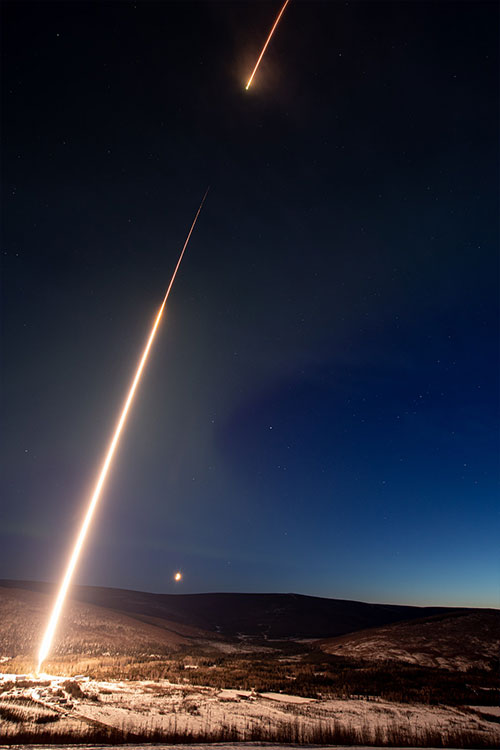The Black Brant IX rocket launched from Poker Flat Research Range north of Fairbanks at 4:47 a.m. Thursday, April 7, 2022. |
Assistant professor Stephen Kaeppler of Clemson University is the principal investigator. Space physicist Mark Conde of the University of Alaska Fairbanks Geophysical Institute is a co-investigator.
The INCAA experiment seeks to better understand what happens to energy from the solar wind after it reaches Earth’s magnetosphere, the shield that protects Earth from the solar wind.
Specifically, the experiment seeks information on how and at what altitude energy is transferred and dissipated from the magnetosphere to the ionosphere-thermosphere system, which reaches from about 50 miles to 400 miles above the planet’s surface.
It also seeks to understand how the interaction of the neutral thermosphere with the overlapping charged ionosphere affects the location of the energy transfer.
The first rocket was a two-stage Black Brant IX carrying a number of tracer payloads. The second rocket was a smaller two-stage Terrier-Improved Malemute carrying instruments.
The University of Calgary and the University of California, Berkeley are also involved in the research.
The experiment had a separately funded component that used UAF’s High-frequency Active Auroral Research Program facility in Gakona. The National Science Foundation funded that component.
Thursday’s launches were the second and third at Poker Flat this year. The Loss through Auroral Microburst Pulsations experiment launched on March 5.
The Geophysical Institute owns Poker Flat, located at Mile 30 Steese Highway, and operates it under a contract with NASA’s Wallops Flight Facility, which is part of the Goddard Space Flight Center.
Related:
NASA rocket team to chase pulsating aurora
SitNews - 02/28/22
Rod Boyce is a writer/information officer with the UAF Geophysical Institute. |
Representations of fact and opinions in comments posted are solely those of the individual posters and do not represent the opinions of Sitnews.
Send a letter to the editor@sitnews.us
SitNews ©2022
Stories In The News
Ketchikan, Alaska
Articles & photographs that appear in SitNews are considered protected by copyright and may not be reprinted without written permission from and payment of any required fees to the proper freelance writers and subscription services.
E-mail your news & photos to editor@sitnews.us
Photographers choosing to submit photographs for publication to SitNews are in doing so granting their permission for publication and for archiving. SitNews does not sell photographs. All requests for purchasing a photograph will be emailed to the photographer.

